18 Best Gait Training Exercises to Boost Your Physical Stability

Maintaining balance and mobility can be challenging after an accident or in old age. Therefore, taking measures to avoid this issue is advisable, as an inability to move means a blow to one's independence. Exercises for gait training can be helpful here to strengthen body muscles and improve stability.
Curious to know more about gait training? Keep reading this article to get a complete overview of the right exercises.

Table of Contents

What is Gait Training?
Gait training is a form of physical therapy that aims to improve a person's ability to walk. It is used to help those who have difficulty walking due to injury, illness, or disability. This therapy involves exercises and techniques to enhance strength, balance, and coordination.
The goal is to restore normal walking patterns and improve mobility and independence. Gait training is often tailored to the individual's needs and may include assistive devices such as walkers or canes.
Who Needs Gait Training?
Gait training is needed by individuals with difficulty walking due to various conditions. This includes people recovering from strokes, injuries such as fractures or sprains, or surgeries like hip or knee replacements.
It is also essential for those with neurological disorders like Parkinson's disease, multiple sclerosis, or cerebral palsy. Additionally, older adults experiencing balance issues or weakness and individuals with amputations or prosthetic limbs often require gait training to improve their mobility and safety.
18 Best Gait Training Exercises
Multiple exercises can be used for gait training. It would help if you chose according to your condition and goals. Here is the list of the best exercises.
1. Seated Marching
This is one of the easiest and most basic exercises from any seating position. It is suitable if you are unable to do tedious workout routines.
Steps to Perform Seated Marching
Step 1: Start with sitting on a chair.
Step 2: Lift your affected leg to your chest, then slowly place it back on the floor.
Step 3: Repeat the procedure with the other leg as well.
Step 4: Maintain a straight and erect back and maintain a controlled movement.
Step 5: To add more challenges, pause for a few seconds after lifting the leg before bringing it down.
Benefits of Doing Seated Marching
Even though it sounds simplistic, seated marching can be beneficial. It targets your hip flexors and improves the leg muscles. This way, you can walk and even climb stairs with ease.
Who Should Avoid?
While anybody can attempt this exercise, you can avoid it if you have severe leg injuries. Further, you should recover before starting to train your muscles.
2. Knee Extension
This is another form of preliminary exercise you can attempt for gait training. It helps to improve knee strength and avoid losing control over these muscles.
Steps to Perform Knee Extension
Step 1: Start with sitting on a chair.
Step 2: Extend one of your legs before you, keeping it parallel to the ground.
Step 3: Avoid locking it completely by slightly bending the knees.
Step 4: This helps you avoid losing control over your knees or experiencing pain in the knee joints.
Step 5: Now, slowly bring your foot down to the floor. Repeat the procedure with the other leg.
Benefits of Doing Knee Extension
This exercise helps improve the strength of your knee joints, which is essential to avoid falls and future mobility loss. It also helps build and strengthen the thigh muscles, increasing stability.
Who Should Avoid?
You can skip this exercise from the workout routine if you have severe pain in the knee joints. Avoid it in case of a serious accident as well.
3. Knee to Chest
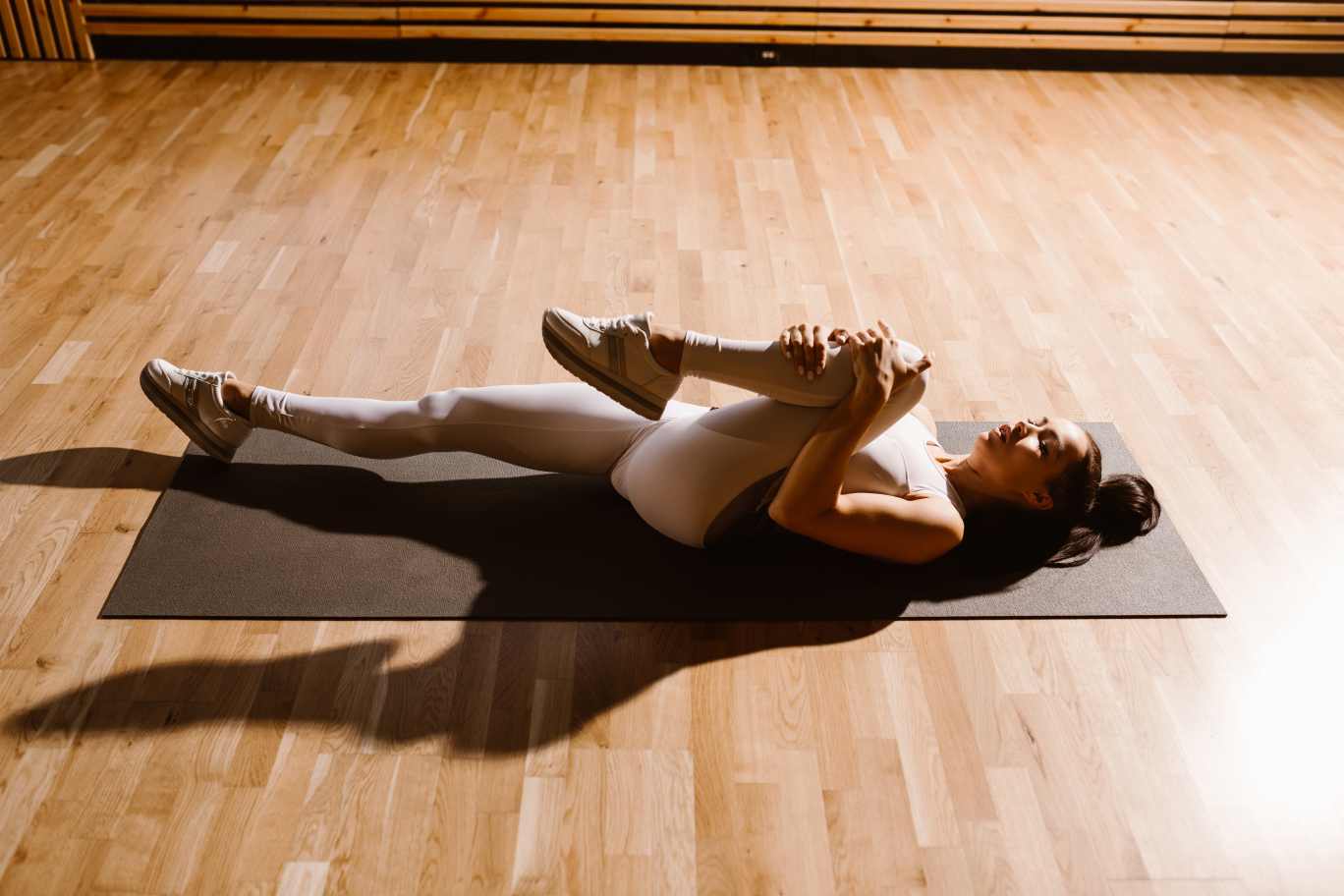
It is one of the most popular exercises for gait training. It is also simple but might be challenging if you recover from an accident.
Steps to Perform Knee Chest
Step 1: Start with a comfortable lying position.
Step 2: Slowly bring your knees to your chest, then hug them with your arms.
Step 3: Hold your left leg with the left arm, and slowly bring the right leg down.
Step 4: Bring the right leg up to your chest and hold it with your right arm.
Step 5: Slowly bring down your left leg. Repeat this procedure.
Benefits of Doing Knee Chest
This exercise is again helpful for increasing the strength of your knee joints. It also helps to loosen up areas like the erector spine, latissimus dorsi, gluteus medius, etc., and it helps to prevent falls because of weak knees.
Who Should Avoid?
You should avoid this workout routine if you have knee, back, or shoulder pain. However, you can always practice this exercise with lower intensity.
4. Toe Taps
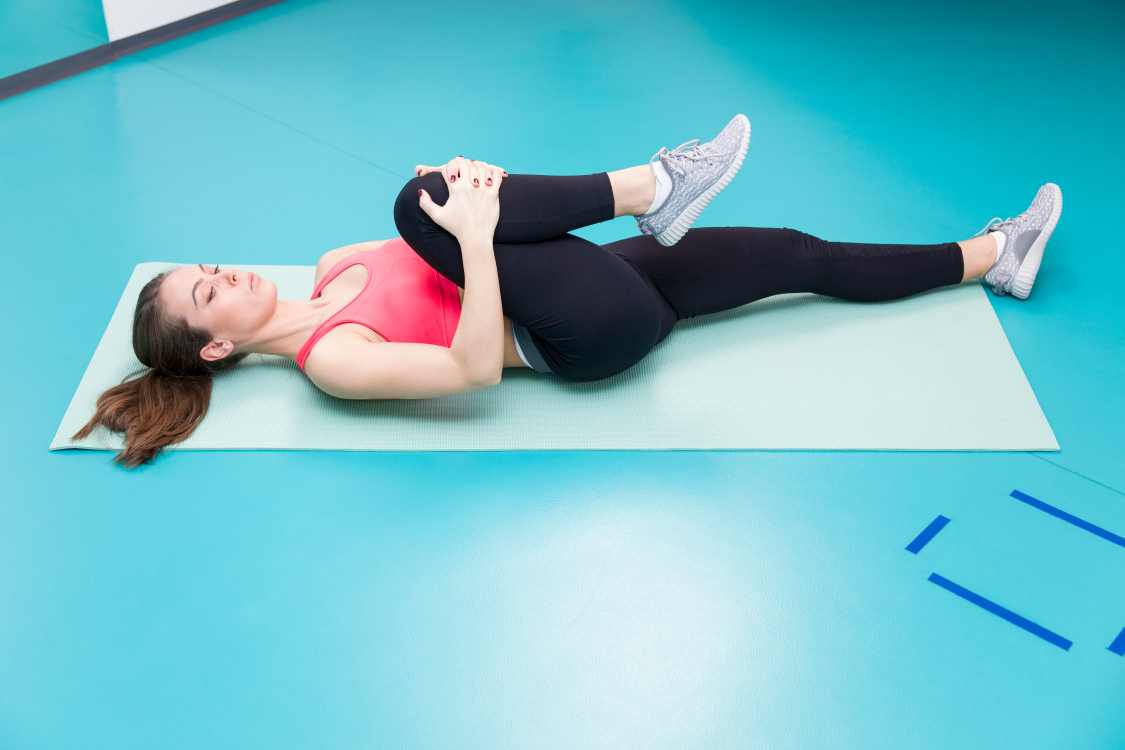
A strong core is essential for maintaining stability and a healthy gait. This simple exercise helps you work on the core.
Steps to Perform Toe Taps
Step 1: Start with lying down on your back.
Step 2: Slowly lift your legs and bend your knees at a 90-degree angle.
Step 3: Make sure that your shins are parallel to the floor.
Step 4: Engage and tighten your core while doing this.
Step 5: Bring your left leg down and lightly tap the floor with the left leg.
Step 6: Now, bring the leg back up.
Step 7: Repeat this exercise with both legs, keeping your core engaged.
Benefits of Toe Taps
This exercise can improve overall strength and stability by engaging and strengthening your core. It also maintains regulation in the leg muscles.
Who Should Avoid?
It might not be suitable if you are receiving an accident that hits your ribs, spine, back or shoulders. It might exert pressure on these areas.
5. Flamingo Stands

It is another simple exercise for strengthening your leg muscles. These stands help to enhance the endurance of these muscles to prevent falls.
Steps to Perform Flamingo Stands
Step 1: Start with standing on the floor with one leg and keep the other off the floor.
Step 2: You can initially use the support of a chair or countertop.
Step 3: However, avoid the support once you are used to this routine.
Step 4: Stand in the flamingo pose with one leg for about 30 seconds.
Step 5: Repeat the process by bringing down the other leg.
Benefits of Flamingo Stands
This position is mainly beneficial since it helps to increase your overall balance. Moreover, it helps you enhance and strengthen your core, which helps enhance your overall stability.
Who Should Avoid?
You can only avoid this routine if you have a good balance and risk falling. Make sure to try support when starting this workout routine.
6. Single Leg Stance
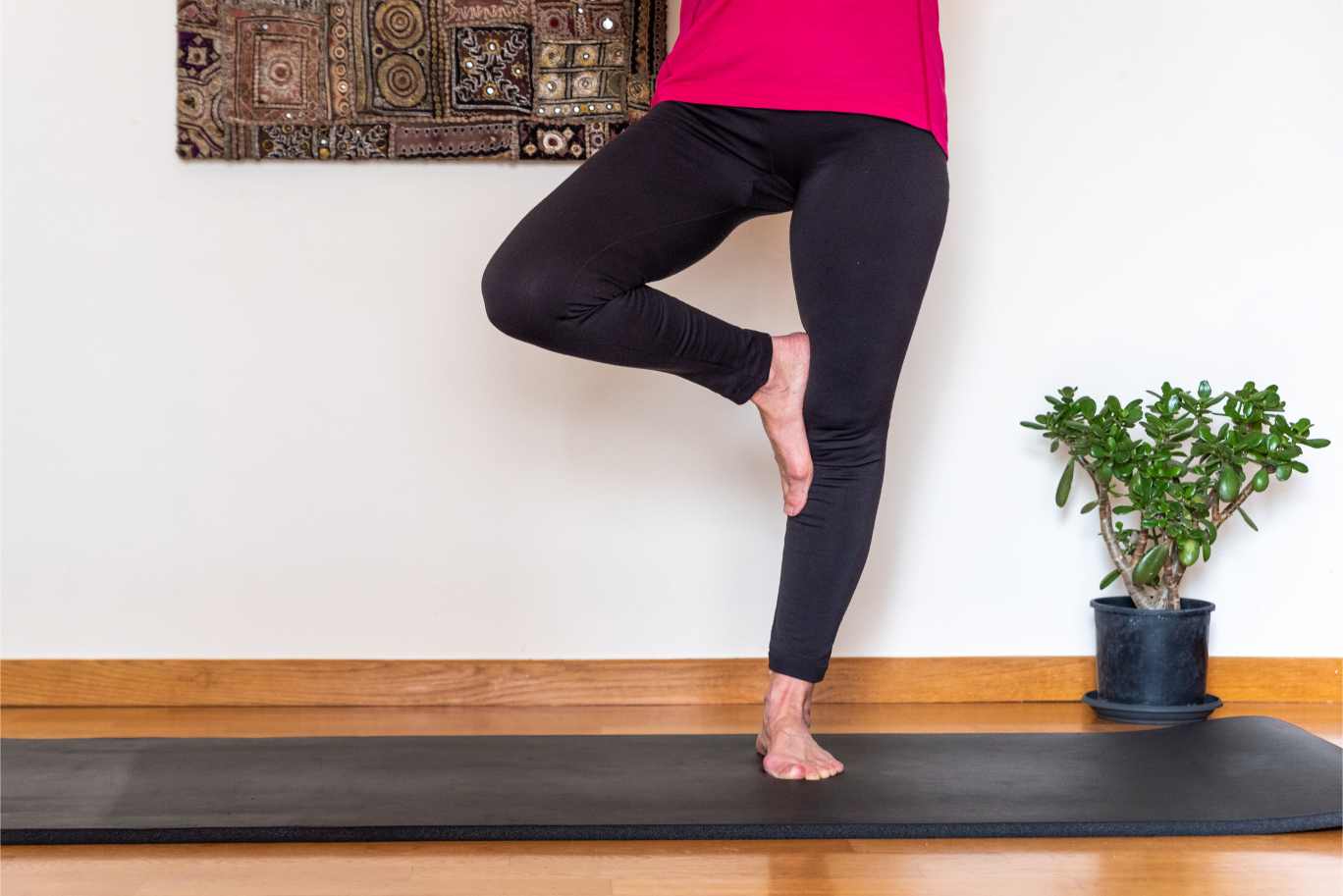
This gait training exercise helps maintain static postural and balance control. It helps to manage the risks of falling due to a lack of stability.
Steps to Perform Single-Leg Stance
Step 1: The procedure is similar to that of flamingo stands. Stand on the floor with your hands on your hips.
Step 2: Start lifting one foot off the ground and place it on the side of your other leg's calf.
Step 3: Now hold this position for about 20-30 seconds.
Step 4: Bring the lifted leg down and repeat the same process with the other leg.
Benefits of Doing Single Leg Stance
This exercise is beneficial for controlling anticipatory postural adjustments (APAs) and can help prevent neurological conditions like Parkinson’s disease, multiple sclerosis, and knee osteoarthritis.
Who Should Avoid?
While this exercise might seem simple, it can affect your core, back and legs. Therefore, avoid this routine if you have acute pain or injuries in these areas.
7. Ankle Dorsiflexion
This exercise routine mainly targets your feet and ankles. It can effectively improve your foot's conditions after illnesses like stroke.
Steps to Perform Ankle Dorsiflexion
Step 1: Start sitting on a chair, keeping your affected leg crossed over the other leg.
Step 2: Now, move your feet into dorsiflexion.
Step 3: Hold your feet with one hand and move them towards the knee.
Step 4: Move into plantar flexion, extending the foot toward the floor.
Step 5: Once you get used to this routine, avoid using your hand and complete the movement only with your feet.
Benefits of Doing Ankle Dorsiflexion
This training is crucial for patients recovering from foot drops after a stroke. It helps to strengthen the muscles surrounding the ankles.
Who Should Avoid?
If you face extreme pain or injuries in your ankles, only attempt this exercise once you recover. Otherwise, try to do it with minimum intensity.
8. Straight Leg Raises
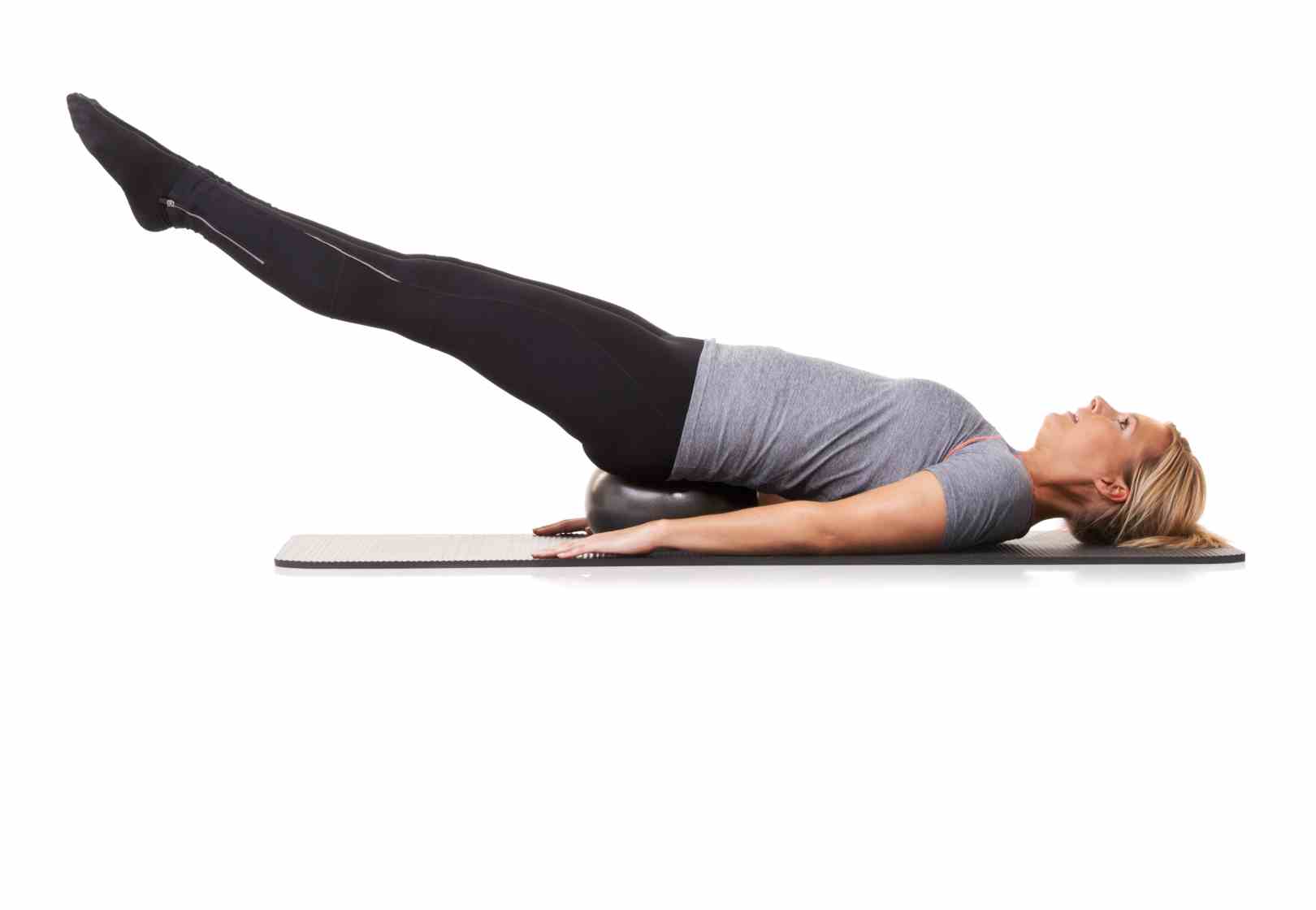
It is a workout routine mostly done after hip or knee replacement surgeries. It is simple and helps target the hip, thigh and abdomen muscles.
Steps to Perform Straight Leg Raises
Step 1: Start by lying on your back, keeping your hips square and legs extended comfortably.
Step 2: Start bending the knee of your non-injured leg at a 90-degree angle.
Step 3: Keep contracting the muscles in the front of your thighs (quadriceps).
Step 4: Start lifting the straight leg a few inches off the floor while inhaling slowly.
Step 5: Hold this position for a few seconds, and lower the leg to the floor while exhaling slowly.
Step 6: Repeat the process with both legs.
Benefits of Doing Straight Leg Raises
This exercise can contribute to gait training by increasing the strength and definition of your abs. Moreover, it enhances the strength of your leg muscles, improving overall flexibility and stability.
Who Should Avoid?
You can skip this workout routine if you still recover from the surgeries. It might be dangerous to attempt this exercise with faulty stability.
9. Side Leg Raises
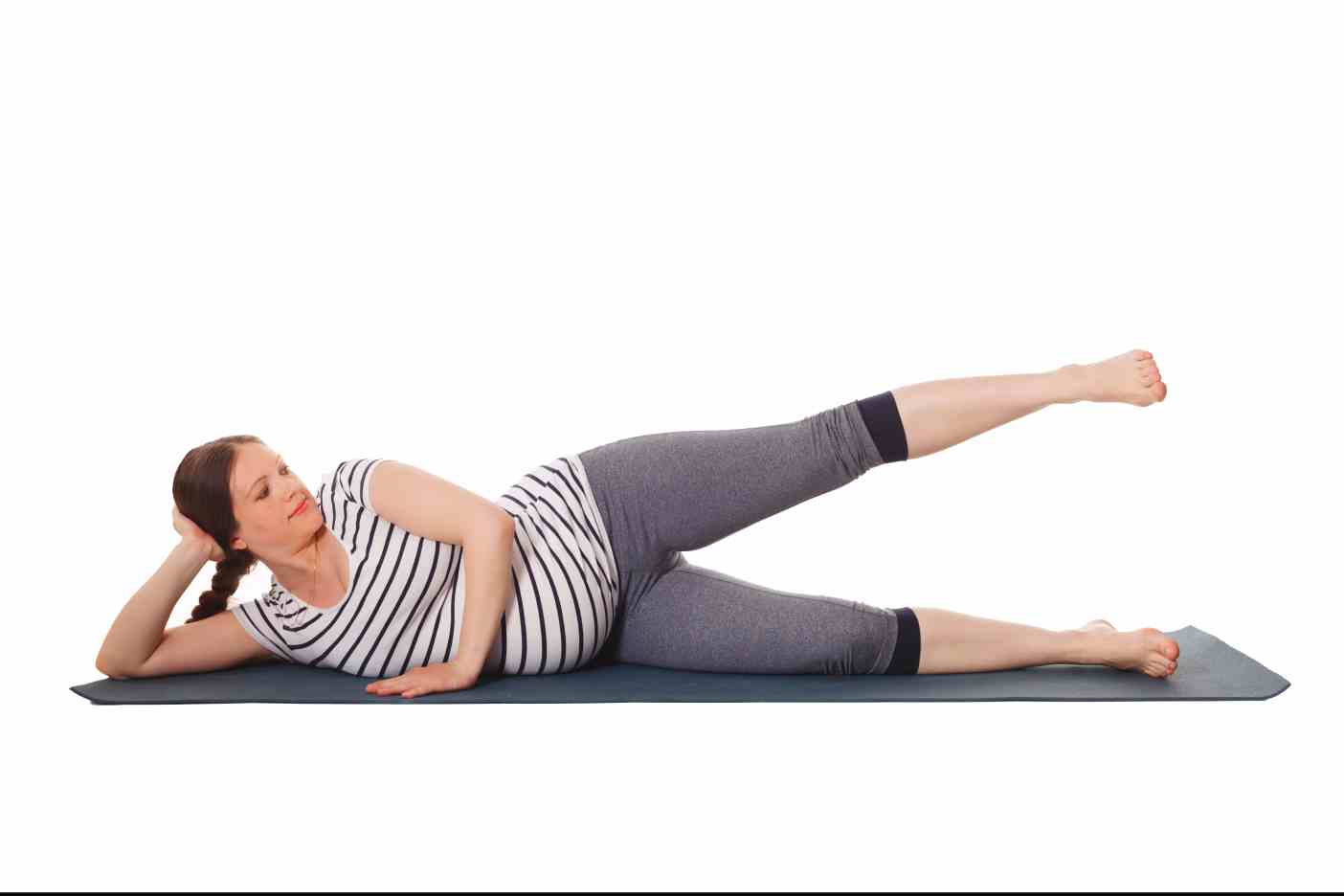
When listing some effective gait workout routines, this exercise can be considered. It can again contribute to improving your overall balance and stability.
Steps to Perform Side Leg Raises
Step 1: Start from a standing position.
Step 2: Lift your leg to your side as far as possible, preferably at 45 or 90 degrees.
Step 3: Hold this position for a few seconds. Next, slowly bring the leg down to the floor while exhaling.
Step 4: Now, lift the other leg similarly and hold it for some time before bringing it down.
Step 5: Keep repeating the process with both your legs.
Benefits of Doing Side Leg Raises
This exercise can improve hip range of motion and overall body stabilisation. Moreover, it enhances muscle endurance by making the muscles more active.
Who Should Avoid?
You can avoid this exercise if you have thigh pain or are recovering from injuries in these muscles. It might have adverse effects if the intensity is too high.
10. Assisted Toe Raises
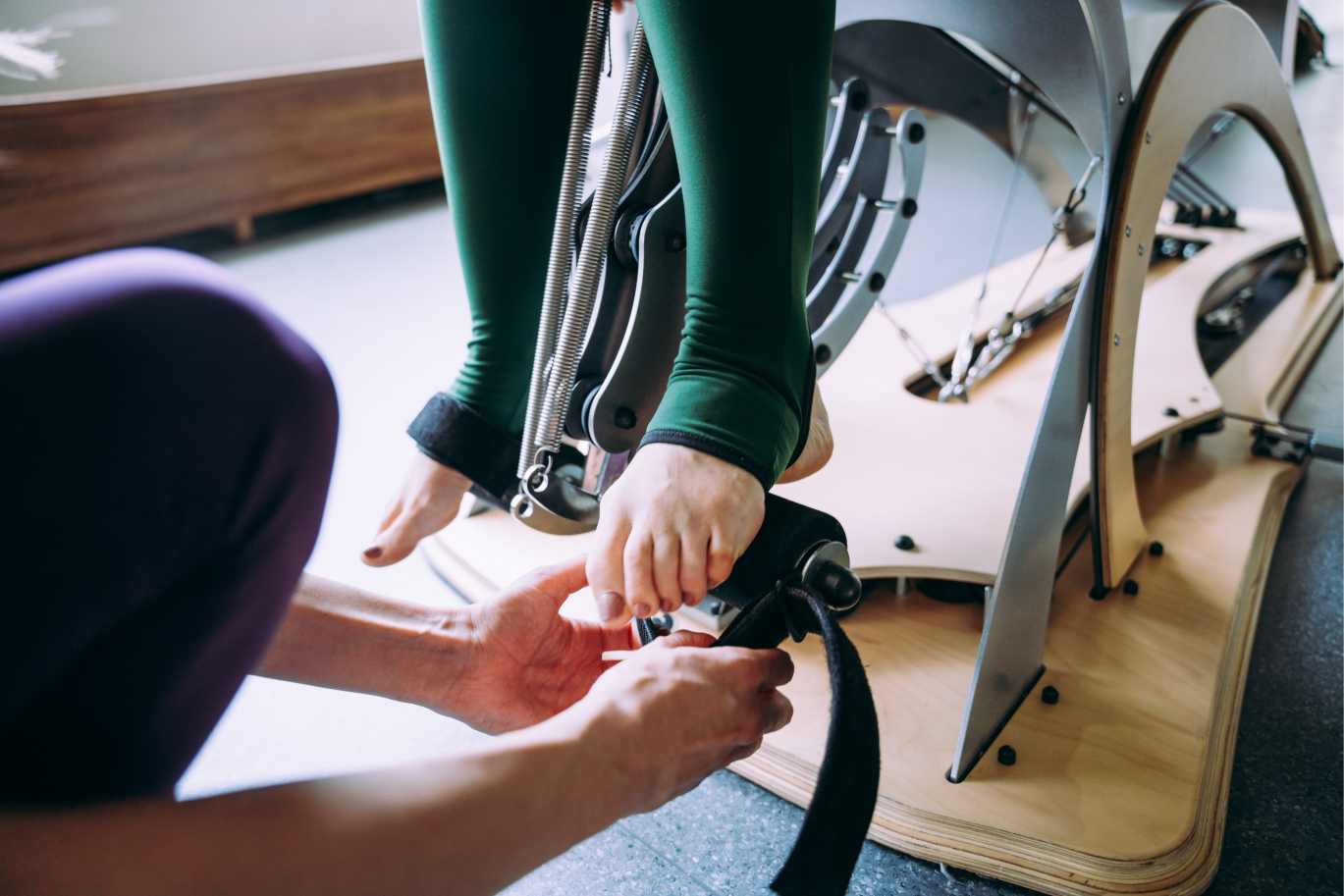
This exercise is again beneficial for those facing foot drops after a severe cardiovascular disease. It helps the brain send the right signals to the foot.
Steps to Perform Assisted Toe Raises
Step 1: Start by sitting on a chair.
Step 2: Place your affected foot over the unaffected one.
Step 3: Now, use the unaffected foot to raise the affected one upwards.
Step 4: Then slowly release it down.
Step 5: Repeat this process a few times.
Step 6: Once you are habituated, stop taking assistance for the unaffected foot.
Benefits of Doing Assisted Toe Raises
This exercise can be beneficial for increasing the strength of the ankles and feet muscles. It can help you recover from your foot drop faster.
Who Should Avoid?
You might skip this exercise if you have pain or recently had surgery. You must wait to recover in the initial stages before continuing with it.
11. Walking on Treadmills
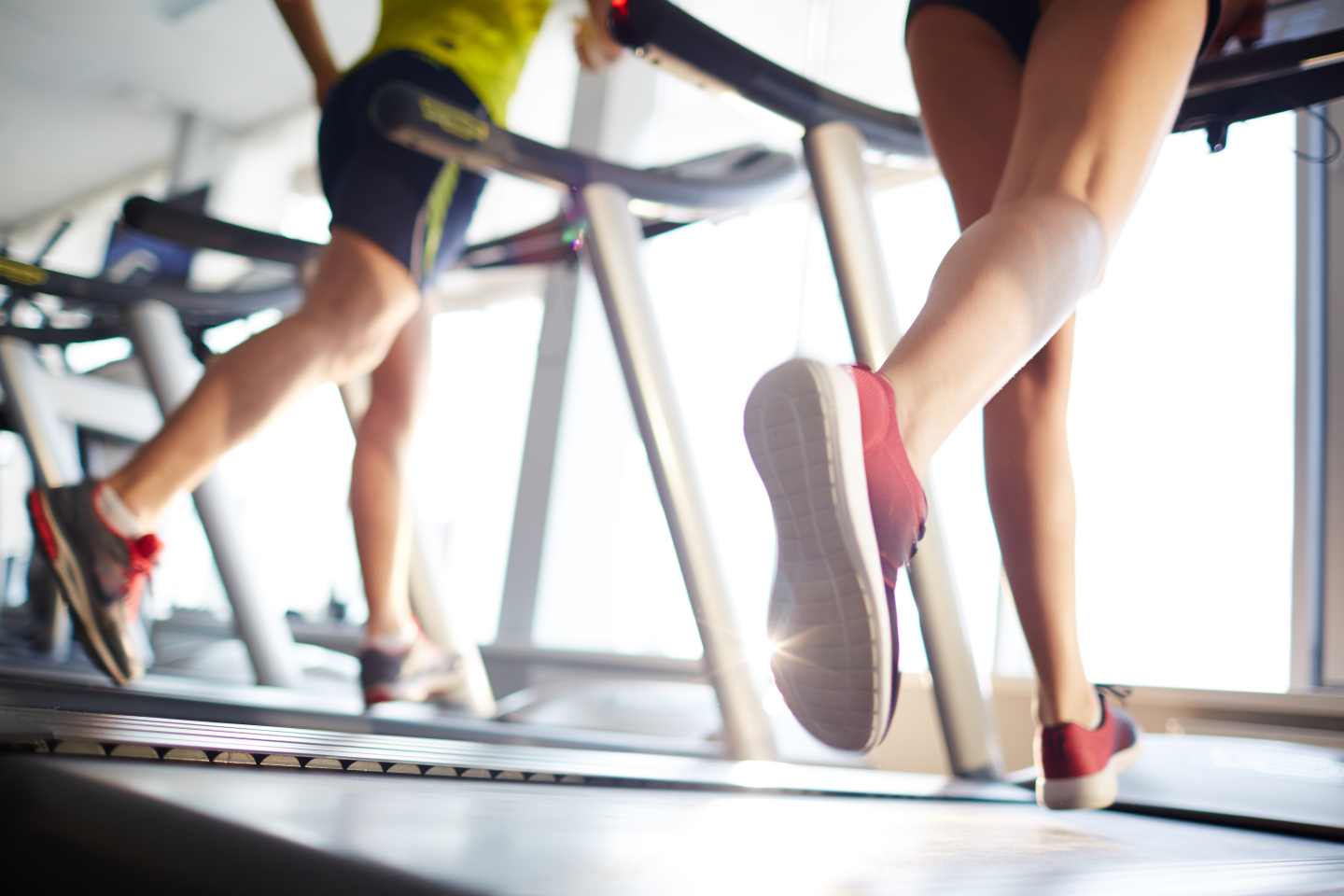
With this gait exercise therapy, you are mimicking a normal walking gait. It is mainly helpful for those who are suffering from neurological disorders. Walking on a treadmill is simple. However, adding a harness to it will provide body weight support.
Steps to Perform Walking on Treadmills
Step 1: Hop on a treadmill and start walking at a regular speed.
Step 2: Even if your stability is not good, the harness will support and prevent any chances of falling.
Step 3: Once you get used to it, you can increase your walking speed and remove the harness.
Benefits of Walking on Treadmills
This therapy helps you improve your stability and balance. You can walk easily without facing the threat of falling.
Who Should Avoid?
You might avoid treadmills if you are recovering from illnesses or surgeries. Taking regular walks can be helpful here.
12. Mini Squats
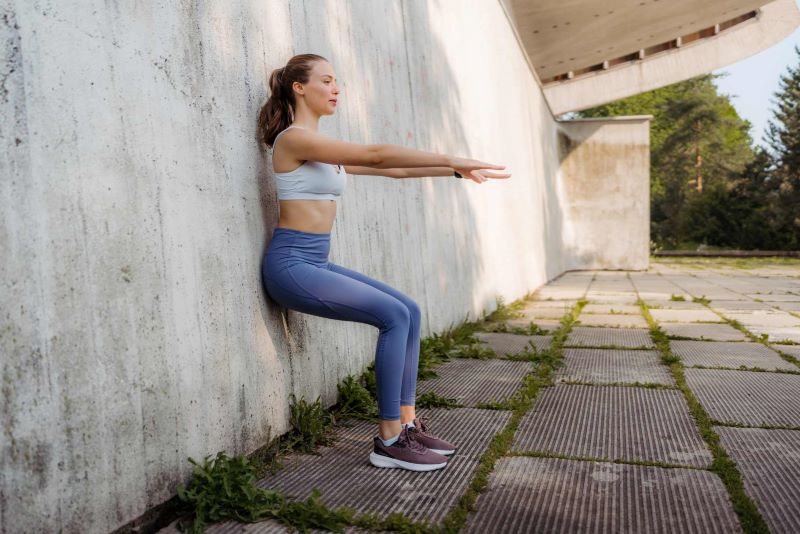
Squats are useful for improving your hip muscles and enhancing the strength of the spin. These are simple yet effective workout routines to strengthen your core muscles.
Steps to Perform Mini Squats
Step 1: Start with standing against a wall. Your heels should be against the baseboard.
Step 2: Pull your lower abdominal muscles in while inhaling and exhaling.
Step 3: Bend your knees and slide partway down the wall.
Step 4: Your gaze should be straight and your chin slightly tucked.
Step 5: Now, move slowly back to the starting position.
Step 6: Repeat it based on your comfort and convenience.
Benefits of Doing Mini Squats
With this workout routine, you can generate more strength in the quadriceps, hamstrings, and outer and inner thighs. It will also provide support for your overall posture.
Who Should Avoid?
If you have leg or back pain, avoid this exercise. Depending on your physical condition, you can reduce the intensity of the squats.
13. Heel Raises
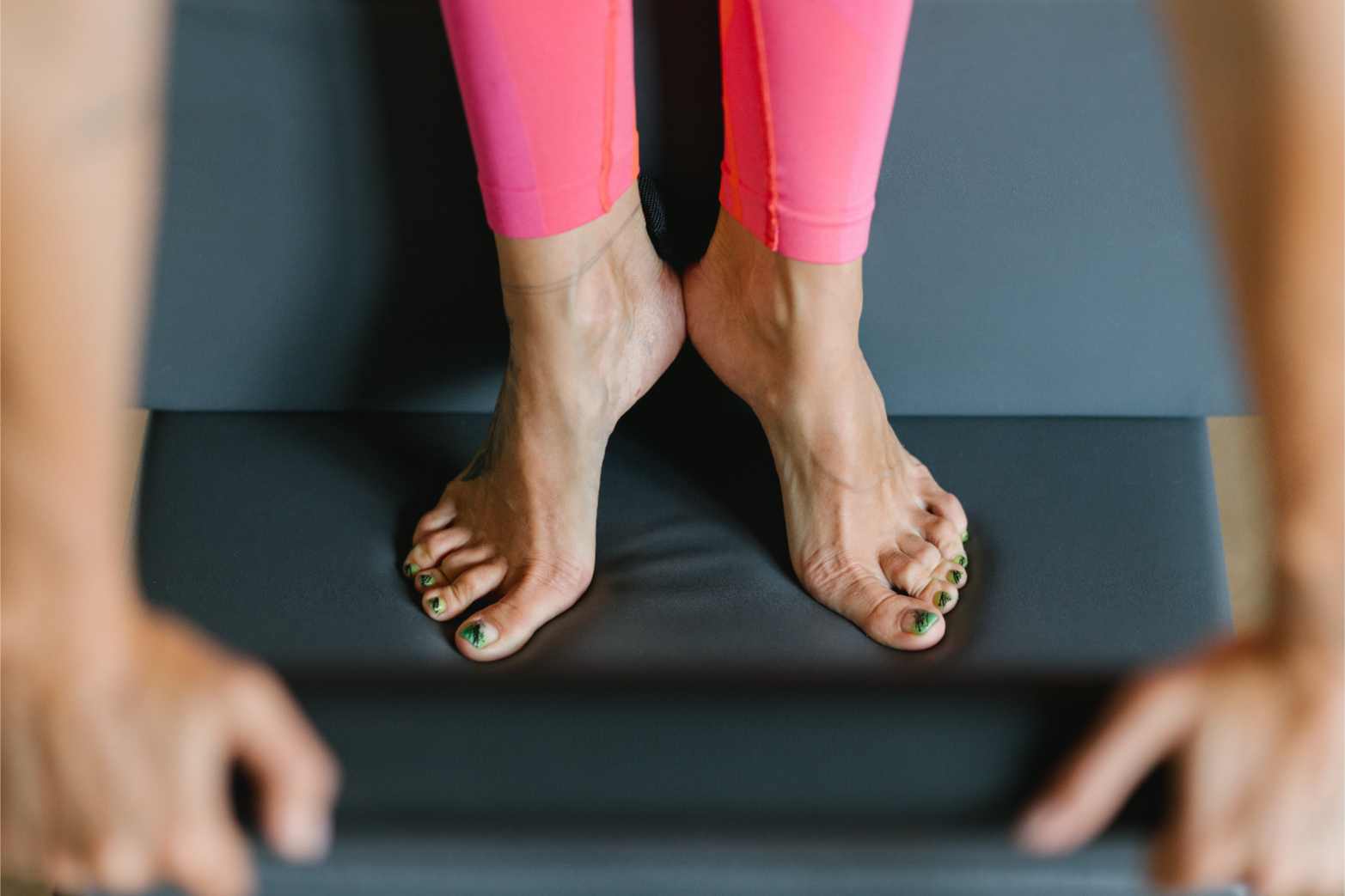
This can be a slightly advanced gait training exercise. It helps to strengthen the heel and toe muscles on your feet, contributing to overall stability.
Steps to Perform Heel Raises
Step 1: Start sitting on a chair and laying your feet flat on the ground.
Step 2: Point your toes and lift your heels off the ground.
Step 3: Place your feet back on the floor and repeat this position.
Step 4: Keep your back and neck erect while doing this exercise.
Benefits of Doing Heel Raises
This exercise can be beneficial for strengthening the muscles of the calves and developing overall athletic fitness. It helps you gain more physical strength and get rid of weaknesses.
Who Should Avoid?
If you have pain or injuries in your heels or toes, you can avoid this workout routine. Reducing the intensity while doing so would help.
14. Target Stepping
This type of exercise is recommended to improve coordination in the lower part of the body. It also helps improve muscle strength and prevent falls.
Steps to Perform Target Stepping
Step 1: You need small paper plates as targets for this exercise.
Step 2: Place four or five targets on the ground in a semicircle.
Step 3: Place these about a foot apart on the ground. Stand on one side of the targets and slowly step with one foot to tap on one of them.
Step 4: Next, return the foot to the starting position.
Step 5: Reach out to another target with the same foot and tap it lightly.
Step 6: Continue tapping on all the targets with one foot, and then repeat with another.
Benefits of Doing Target Stepping
This exercise improves your ability to place your foot exactly where you want it. It can also be effective for people with poor walking balance, reducing their chances of falling.
Who Should Avoid?
You can avoid this exercise if you fear falling and have a bad balance. Support yourself with chairs or countertops while doing this.
15. Marching in Place
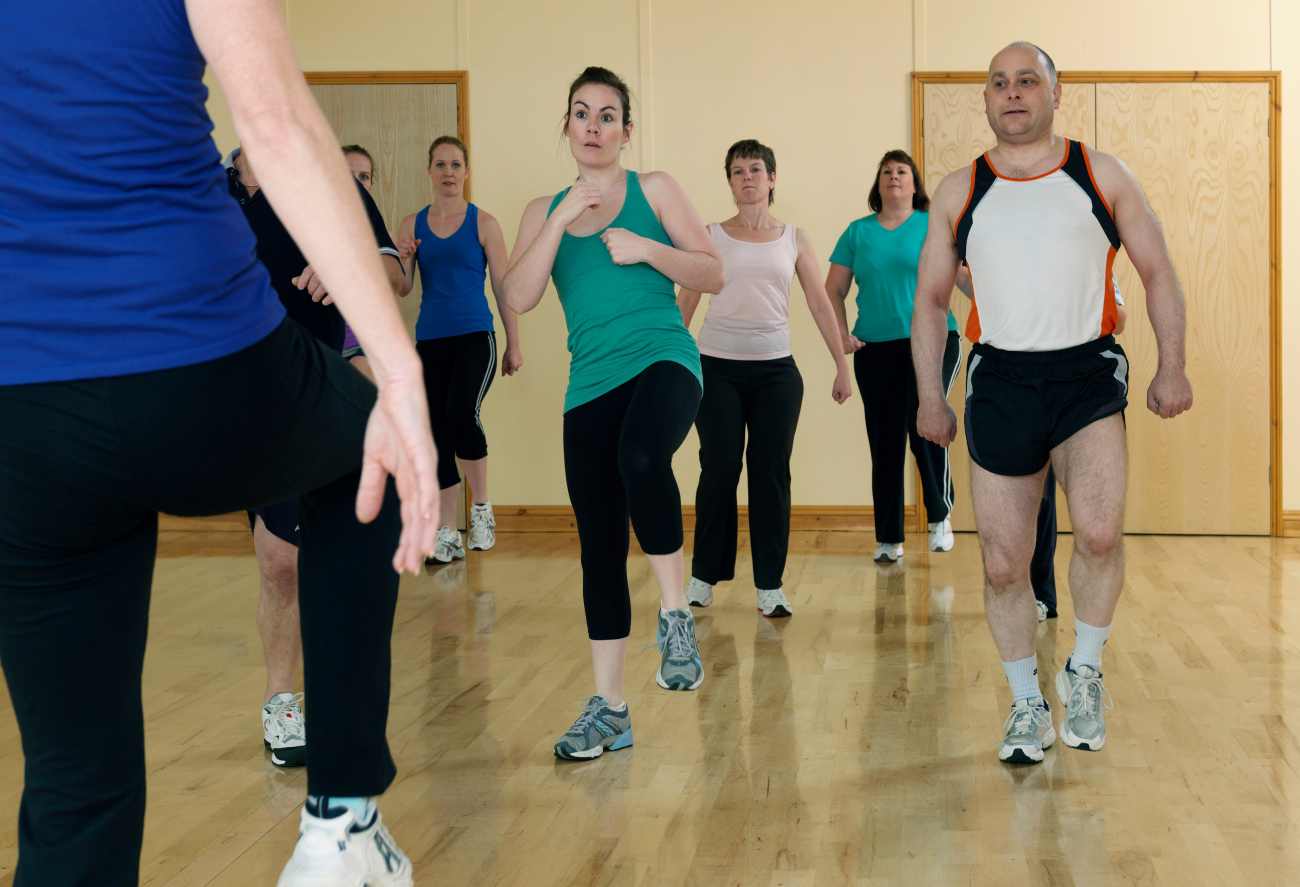
This exercise benefits those who need cardio without putting excess stress on the body. It helps improve balance.
Steps to Perform Marching in Place
Step 1: Stand tall with feet hip-width apart.
Step 2: Lift one knee towards your chest.
Step 3: Lower it and repeat with the other leg.
Step 4: Continue alternating legs as if marching in place.
Benefits of Marching in Place
Marching improves balance, strengthens leg muscles, and promotes coordination. It can also help improve body stability.
Who Should Avoid?
Individuals with severe balance issues or recent lower limb injuries should proceed cautiously or consult a healthcare professional.
16. Heel-to-Toe Walk
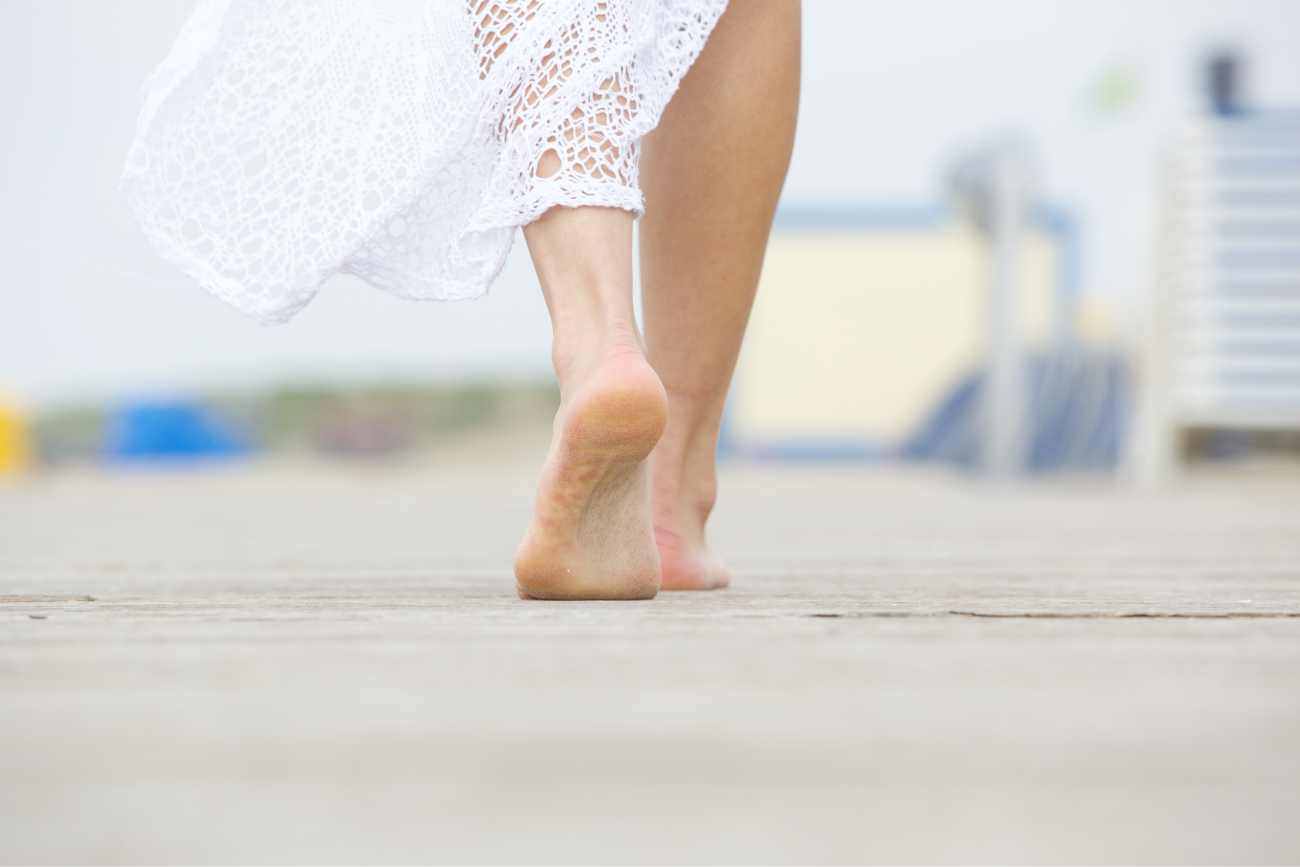
The heel-to-toe walk is essential for people to improve their normal walking stride. Walk in a straight line with small strides in a heel-to-toe manner.
Steps to Perform Heel-to-Toe Walk
Step 1: Place one foot in front of the other.
Step 2: The heel of the front foot should touch the toes of the back foot.
Step 3: Walk in a straight line, placing each foot directly in front of the other.
Step 4: Continue till possible, then start again.
Benefits of Doing Heel-to-Toe Walk
Enhances balance, coordination, and proprioception (awareness of body position in space). This walk helps to check the person's balance by walking in a straight line.
Who Should Avoid?
Individuals with severe balance impairments or neurological conditions affecting gait should perform this exercise under supervision.
17. Step-Ups

The step-up exercise style will help with balance-related issues. The distance of the step-up can be more or less depending on the requirement.
Steps to Perform Step-Ups
Step 1: Stand facing a step or sturdy platform.
Step 2: Step up onto the platform with one foot.
Step 3: Then, bring the other foot up to meet it.
Step 4: Step back down with the same foot leading.
Benefits of Doing Step-Ups
Strengthens leg muscles, improves cardiovascular fitness, and mimics stair climbing movements.
Who Should Avoid?
People with knee or ankle instability, recent joint surgeries, or cardiovascular issues should cautiously approach step-ups and may need modifications.
18. Walking on Tiptoes
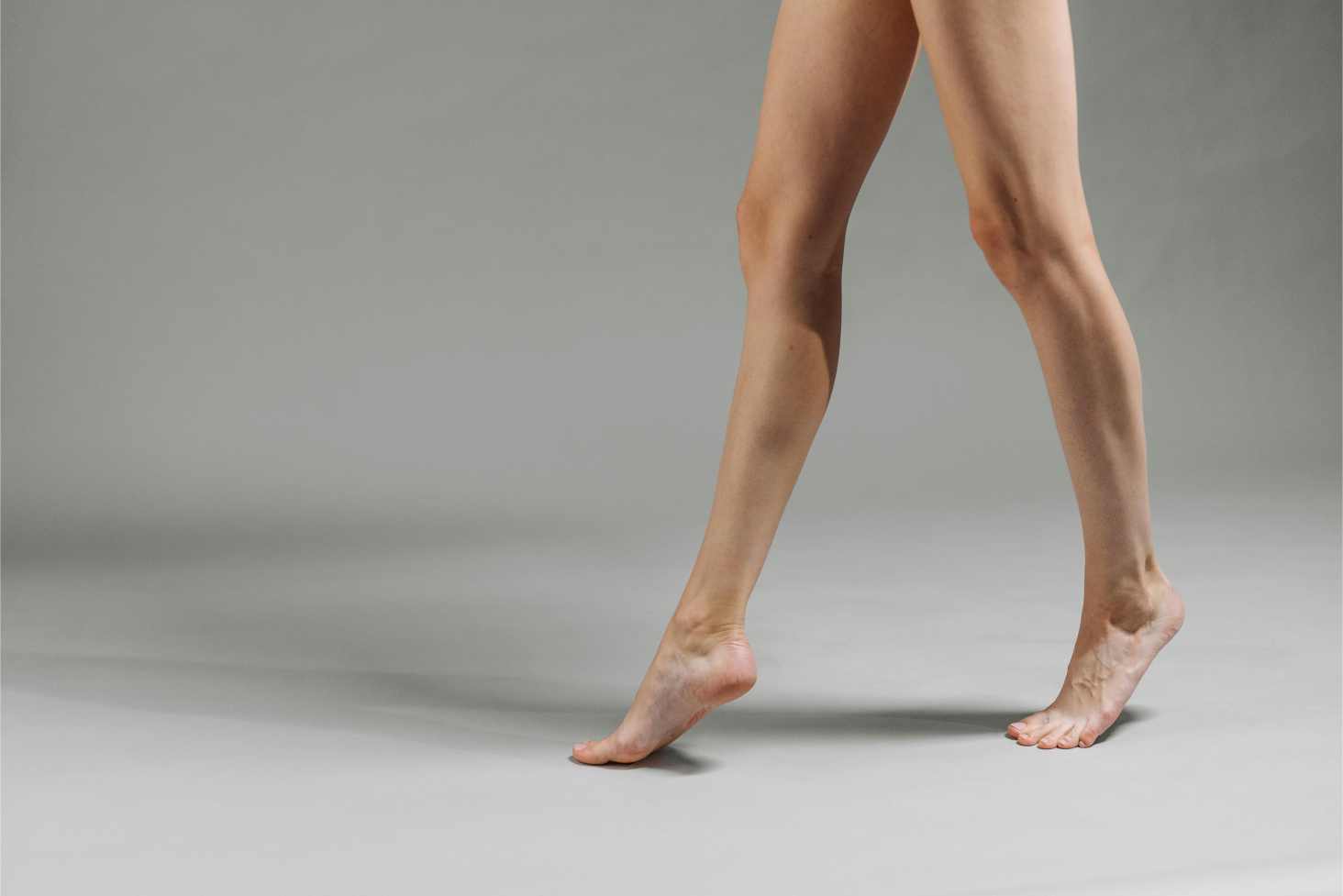
Walking on tiptoes balances the whole body on a tiny part of the foot. Walking on tiptoes also builds foot strength and calf muscles.
Steps to Perform Walking on Tiptoes
Step 1: Rise onto the balls of your feet with heels lifted off the ground.
Step 2: Walk forward with small, controlled steps, maintaining the tiptoe position.
Step 3: Walk ahead as far as you can on your tiptoes.
Step 4: Raise your feet higher to challenge yourself.
Benefits of Walking on Tiptoes
Strengthens calf muscles, improves ankle stability, and enhances balance and proprioception.
Who Should Avoid?
Individuals with Achilles tendon injuries, plantar fasciitis, or severe ankle instability should avoid or modify this exercise.
How Does Gait Training Work?
Gait training is a physical therapy that helps you improve your mobility and stability. Doctors usually suggest these when your walking abilities are affected by accidents or other illnesses. A healthy gait training helps you with the following.
Stronger muscles and joints
Improved balance and posture
Developed muscle memory and endurance
Restrained legs for regular motions
Reduces the risks of falling
These exercises will benefit you if you have a broken leg or pelvis. Moreover, joint and spinal cord injuries can also majorly blow your walking abilities. Practising gait training exercises will help you recover faster.
Types of Equipment for Gait Training
These equipment options can be tailored to individual needs and rehabilitation goals, and their selection should be based on the assessment of a qualified healthcare professional.
Exercise |
Equipment |
| Walking and balance exercises | Parallel Bars |
| Walking exercises | Gait Belts |
| Balance impairment exercises | Walkers |
| Walking or gait training exercises | Treadmills with Handrails |
| Balance and stability exercises | Balance Boards |
| Stair climbing | Step Trainers |
Which Exercises to Avoid While Gait Training?
Doctors suggest gait training exercises to revive balance and stability when recovering from accidents or illnesses. Avoiding high-intensity workout routines is advisable, as these can harm weak and developing muscles. For instance, weight training exercises like lat pull-downs and the kettlebell might offer threats of injuries.
Moreover, you should avoid lifting dumbbells or medicine balls during this time. Overhead squats and backward rotation exercises can harm the paining muscles, negatively affecting your stability. Therefore, try to avoid these workout routines when you are focusing completely on gait training.
Safety Precautions to Take While Exercising
While the exercises discussed here are mostly simple, some precautions should be taken. If recovering from an accident or a stroke, you should maintain the precautions listed below -
- Understand the strength of the muscles and choose the exercises accordingly.
- Take advice from your physician or a professional fitness instructor if you need clarification.
- Maintain a minimal intensity of the workout in the initial stages. You can increase it later.
- Do not use any weights in the initial days. Weight lifting will negatively affect the muscles.
- Take the support of chairs or tables to avoid falling while exercising.
- Stop working out immediately if you start feeling intense muscle or joint pain.
Disclaimer: Practice the exercises mentioned above under the supervision of a trained practitioner and consult a doctor beforehand to ensure your body is fit enough to perform the required moves/postures.
Incorporating specific gait training exercises is crucial for enhancing stability and balance, particularly for individuals recovering from injuries, surgeries, or chronic conditions that affect mobility.
Effective exercises, such as leg lifts, heel-to-toe walking, and standing marches, can significantly improve muscle strength, coordination, and overall gait patterns.













